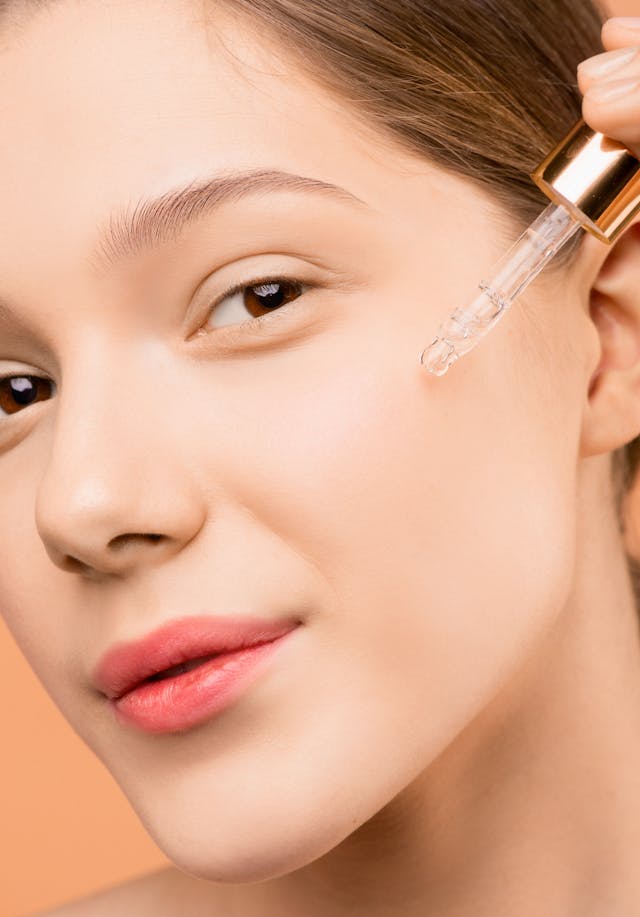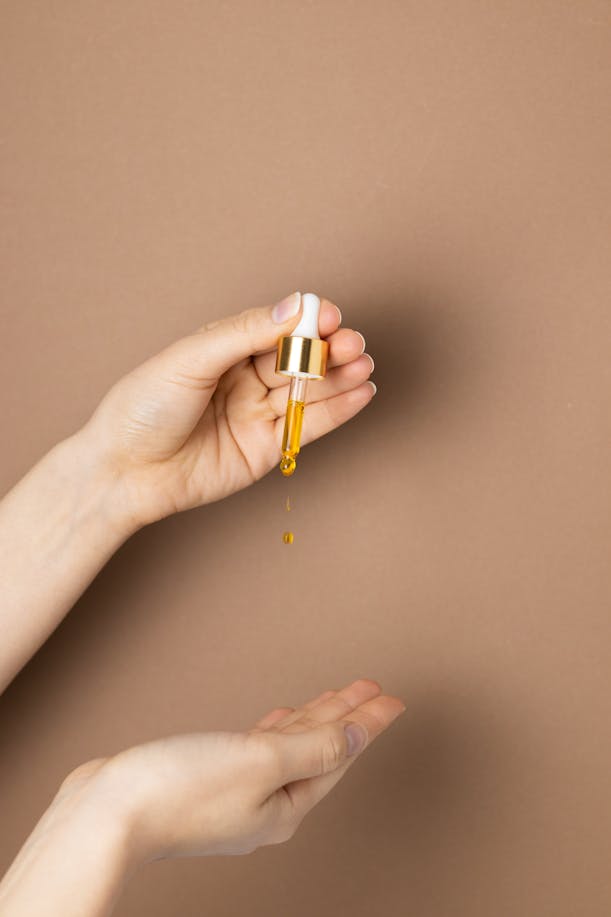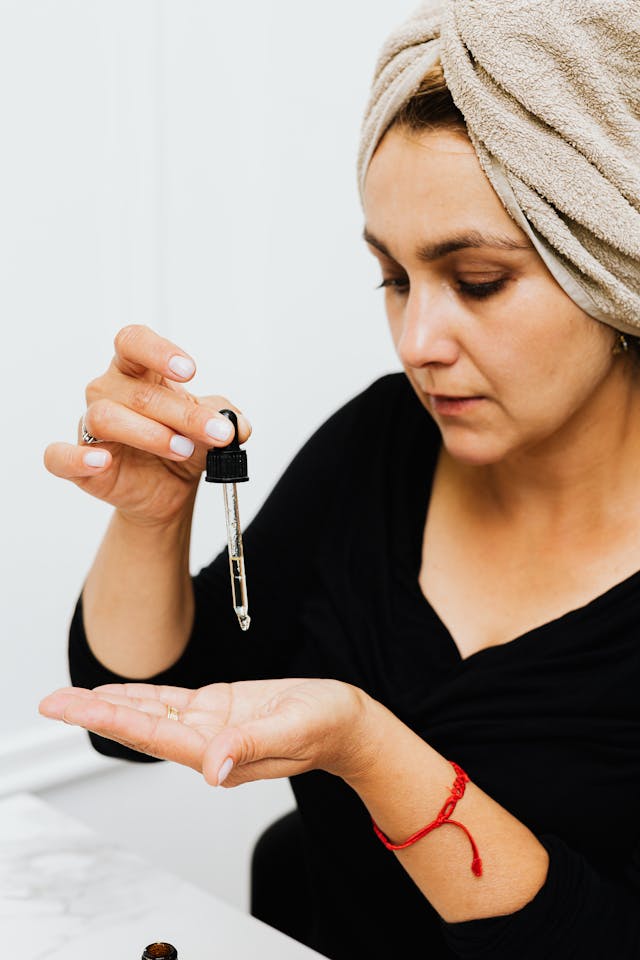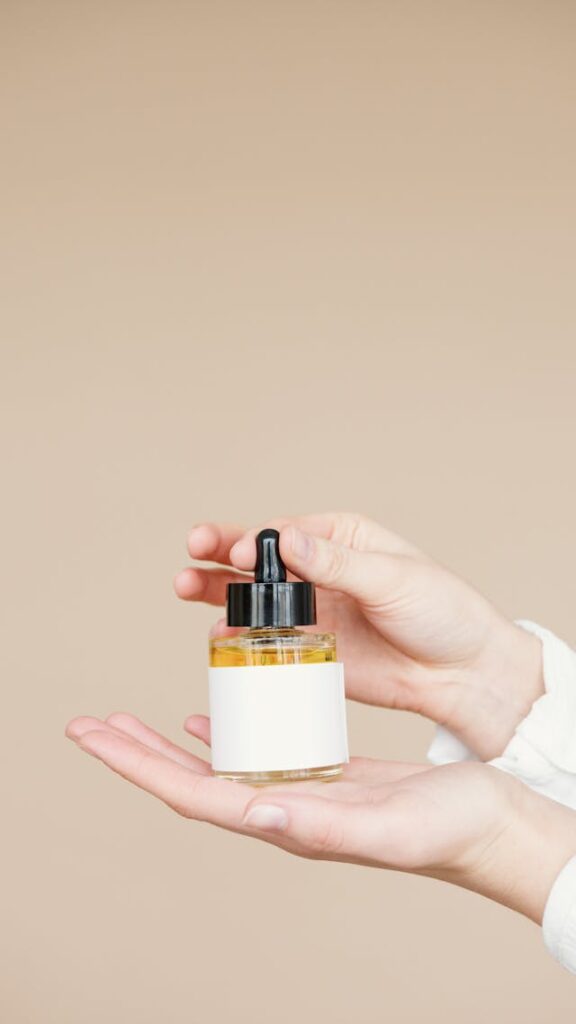Face oils have become increasingly popular in the beauty industry in recent years, and for good reason. They are a great addition to any skincare routine, providing hydration and nourishment to the skin. When combined with gua sha, a traditional Chinese medicine technique, the benefits of face oils are amplified, resulting in a glowing complexion and improved skin health.
Gua sha involves using a smooth tool, typically made of jade or rose quartz, to scrape the skin in a specific pattern to promote circulation and lymphatic drainage. This technique has been used for centuries to improve overall health and well-being. When paired with face oils, the tool glides smoothly over the skin, enhancing the absorption of the oil and providing additional benefits.
Selecting the right face oil for gua sha is crucial to achieving optimal results. Different oils have different properties, and it is important to choose one that is compatible with your skin type and concerns. With so many options available, it can be overwhelming to know where to start. In this article, we will explore the significance of gua sha, the role of face oils in the technique, and how to select the right oil for your skin type.
Key Takeaways
- Gua sha is a traditional Chinese medicine technique that promotes circulation and lymphatic drainage.
- Face oils can enhance the benefits of gua sha by providing hydration and nourishment to the skin.
- Choosing the right face oil for your skin type is crucial for optimal results.
Understanding Gua Sha and Its Significance
Origins and History of Gua Sha
Gua Sha is an ancient Chinese healing technique that has been practiced for centuries. The word “Gua” means to scrape, and “Sha” refers to the redness or petechiae that appears on the skin after the treatment. The practice involves using a smooth-edged tool, such as a jade or rose quartz gua sha tool, to scrape the skin in a downward motion, promoting blood flow and lymphatic drainage. The technique was originally used to treat various ailments, including fever, cough, and digestive disorders.
Gua Sha in Traditional Chinese Medicine
In traditional Chinese medicine, Gua Sha is believed to help release stagnation and promote the flow of Qi (pronounced “chee”), the body’s vital energy. According to TCM theory, stagnation of Qi and blood can lead to various health issues, including pain, inflammation, and skin problems. By promoting the flow of Qi and blood, Gua Sha is thought to help alleviate these issues.
Benefits of Gua Sha for the Skin
In recent years, Gua Sha has gained popularity as a beauty treatment, particularly for the face. Proponents of facial Gua Sha claim that it can help improve the appearance of fine lines and wrinkles, reduce puffiness, and promote a more radiant complexion. While there is limited scientific research on the benefits of Gua Sha for the skin, some studies suggest that the technique may help increase blood flow and stimulate collagen production, which could lead to improved skin texture and firmness.
Overall, Gua Sha is a simple yet powerful technique that has stood the test of time. Whether used for healing or beauty purposes, it is an effective way to promote the flow of Qi and blood, and support overall health and wellness.
The Role of Face Oils in Gua Sha
Gua sha is a traditional Chinese healing technique that involves scraping the skin with a smooth-edged tool to promote circulation and lymphatic drainage. It has gained popularity in recent years as a facial rejuvenation treatment, with many people incorporating gua sha into their skincare routines.
One essential component of gua sha is the use of a face oil. In this section, we’ll explore why face oils are essential for gua sha, the properties of a good gua sha oil, and the importance of slip in face oils.
Why Face Oils Are Essential for Gua Sha
Face oils play a crucial role in gua sha because they provide lubrication and slip, which allows the gua sha tool to glide smoothly over the skin without pulling or tugging. This is important because pulling or tugging on the skin can cause damage and irritation, which can lead to premature aging and other skin concerns.
Additionally, face oils help to nourish and hydrate the skin, which is essential for achieving optimal results with gua sha. When the skin is well-hydrated, it is more plump, supple, and resilient, which means it can better withstand the pressure of the gua sha tool.
Properties of a Good Gua Sha Oil
Not all face oils are created equal, and when it comes to gua sha, it’s important to choose an oil that has the right properties. A good gua sha oil should be lightweight, non-greasy, and absorb quickly into the skin. It should also provide enough slip to allow the gua sha tool to glide smoothly over the skin without pulling or tugging.
Some of the best oils for gua sha include jojoba oil, grapeseed oil, and rosehip oil. These oils are lightweight, non-greasy, and absorb quickly into the skin. They also provide excellent slip, which makes them ideal for use with gua sha.
The Importance of Slip in Face Oils
Slip is one of the most important properties of a good gua sha oil. Slip refers to the oil’s ability to provide lubrication and glide smoothly over the skin. Without slip, the gua sha tool can pull or tug on the skin, which can cause damage and irritation.
To ensure that your gua sha oil has enough slip, look for an oil that is lightweight and non-greasy. You can also add a few drops of your favorite facial oil to your gua sha oil to increase its slip.
In conclusion, face oils are an essential component of gua sha. They provide lubrication and slip, which allow the gua sha tool to glide smoothly over the skin without pulling or tugging. When choosing a gua sha oil, it’s important to look for an oil that is lightweight, non-greasy, and provides enough slip to ensure optimal results.
Selecting the Right Face Oil
When it comes to gua sha, face oils are an essential part of the routine. They help the gua sha tool glide smoothly over the skin, while also providing nourishment and hydration. However, with so many face oils on the market, it can be overwhelming to choose the right one. Here are some things to keep in mind when selecting a face oil for gua sha.
Face Oils for Different Skin Types
First and foremost, it’s important to consider your skin type when choosing a face oil. Different oils have different properties that make them more suitable for certain skin types. Here are some general guidelines:
- Sensitive skin: Look for gentle, non-irritating oils like chamomile, calendula, and jojoba.
- Acne-prone skin: Consider oils with anti-inflammatory properties like tea tree, rosehip, and evening primrose.
- Dry skin: Opt for heavier, more emollient oils like avocado, argan, and marula.
- Oily skin: Choose lightweight, non-comedogenic oils like grapeseed, rosehip, and squalane.
- Combination skin: Look for oils that balance both dry and oily areas, such as jojoba, rosehip, and apricot kernel.
Considering Skin Concerns When Choosing Oils
In addition to skin type, it’s also important to consider any specific skin concerns you may have. For example, if you’re looking to brighten dull skin, you may want to choose an oil with vitamin C or other antioxidants. If you’re concerned about fine lines and wrinkles, look for oils with high levels of fatty acids like omega-3 and omega-6.
Top Ingredients to Look for in Face Oils
When browsing face oils, it can be helpful to know which ingredients are most beneficial for the skin. Here are some top ingredients to look for:
- Fatty acids: These help to nourish and hydrate the skin, and can be found in oils like argan, rosehip, and evening primrose.
- Antioxidants: These protect the skin from free radical damage and can be found in oils like vitamin E, green tea, and pomegranate seed.
- Vitamin C: This powerful antioxidant can help brighten the skin and even out skin tone. Look for oils with ascorbic acid or other forms of vitamin C.
- Squalane: This lightweight oil is great for all skin types and helps to improve skin texture and hydration.
By keeping these factors in mind, you can choose a face oil that is perfectly suited to your skin’s needs.
Top Face Oils for Gua Sha
Gua sha is a traditional Chinese practice that has been gaining popularity in recent years. It involves using a tool to massage the face, which can help to improve circulation, reduce inflammation, and promote lymphatic drainage. One of the best ways to enhance the benefits of gua sha is to use a face oil. Here are some of the top face oils for gua sha:
Luxury Oils for a Splurge
- Rosehip Oil: This luxurious oil is packed with antioxidants and essential fatty acids, making it an excellent choice for anyone looking to improve the overall health and appearance of their skin. It is particularly beneficial for those with dry or mature skin, as it can help to hydrate and plump the skin.
- Marula Oil: Another high-end option, marula oil is rich in antioxidants and omega-9 fatty acids. It is known for its ability to hydrate and nourish the skin, while also providing anti-aging benefits.
Budget-Friendly Oils for Everyday Use
- Argan Oil: This affordable oil is rich in vitamin E and fatty acids, making it an excellent choice for anyone looking to improve the health and appearance of their skin. It is particularly beneficial for those with oily or acne-prone skin, as it can help to regulate sebum production.
- Squalane Oil: This lightweight oil is derived from olives and is known for its ability to hydrate and soften the skin. It is particularly beneficial for those with sensitive or acne-prone skin, as it is non-comedogenic and non-irritating.
Specific Oils for Targeted Concerns
- Jojoba Oil: This versatile oil is similar in composition to the natural oils produced by the skin, making it an excellent choice for those with dry or sensitive skin. It can help to hydrate and soothe the skin, while also providing anti-inflammatory benefits.
- Grapeseed Oil: This lightweight oil is rich in antioxidants and linoleic acid, making it an excellent choice for anyone looking to improve the health and appearance of their skin. It is particularly beneficial for those with oily or acne-prone skin, as it can help to regulate sebum production.
- Almond Oil: This nourishing oil is rich in vitamin E and fatty acids, making it an excellent choice for anyone looking to improve the health and appearance of their skin. It is particularly beneficial for those with dry or mature skin, as it can help to hydrate and plump the skin.
- Sea Buckthorn Oil: This bright orange oil is packed with antioxidants and essential fatty acids, making it an excellent choice for anyone looking to improve the overall health and appearance of their skin. It is particularly beneficial for those with dull or aging skin, as it can help to brighten and firm the skin.
When choosing a face oil for gua sha, it is important to consider your skin type and any specific concerns you may have. Whether you opt for a luxury oil or a budget-friendly option, incorporating a face oil into your gua sha routine can help to enhance the benefits of this ancient practice.
How to Use Face Oils with Gua Sha Tools
Gua sha massage is a traditional Chinese technique that involves using a smooth-edged tool to scrape the skin in order to stimulate blood flow and promote healing. When combined with face oils, gua sha tools can help to enhance the benefits of the massage and leave the skin looking and feeling rejuvenated. Here are some tips on how to use face oils with gua sha tools effectively.
Preparation and Application Techniques
Before starting the massage, it is important to prepare the skin properly. Begin by cleansing the face and applying a few drops of face oil to the skin. The oil should be spread evenly over the face, making sure to cover all areas that will be massaged.
To perform the massage, hold the gua sha tool at a 45-degree angle to the skin and use gentle pressure to scrape the tool across the face. The tool should be moved in an upward and outward motion, following the contours of the face. Repeat this process several times, focusing on areas that are particularly tense or congested.
Types of Gua Sha Tools and Their Uses
There are several types of gua sha tools available, each with its own unique benefits. Jade and rose quartz are popular options that are believed to promote healing and relaxation. Bian stones are another option that are said to have powerful healing properties and are often used for deep tissue massage.
When choosing a gua sha tool, it is important to consider the shape and size of the tool, as well as the material it is made from. Some tools are designed specifically for use on certain areas of the face, such as the jawline or cheekbones, while others are more versatile and can be used on the entire face.
Maintaining Your Gua Sha Tools
To ensure that your gua sha tools remain in good condition, it is important to clean them regularly. After each use, rinse the tool with warm water and mild soap, then dry it thoroughly with a soft cloth. Avoid using harsh chemicals or abrasive materials, as these can damage the surface of the tool.
With regular use, gua sha tools can help to improve the overall health and appearance of the skin. By combining them with face oils, you can enhance the benefits of the massage and achieve a glowing, radiant complexion.
Integrating Gua Sha and Face Oils into Your Skincare Routine
Gua sha is an ancient Chinese healing technique that involves scraping a flat tool across the skin to stimulate circulation and release tension. When combined with face oils, it can provide a relaxing and rejuvenating skincare experience that leaves your skin feeling hydrated and nourished.
Creating a Consistent Skincare Routine
To get the most out of gua sha and face oils, it’s important to integrate them into a consistent skincare routine. This means cleansing your skin twice a day, applying a serum for hydration, and finishing with a face oil to lock in moisture and nourish your skin.
Morning vs. Evening Skincare with Gua Sha
In the morning, gua sha can help wake up your skin and reduce puffiness. It’s best to use a light face oil that absorbs quickly so you can apply makeup without any greasiness. In the evening, gua sha can help release tension and promote relaxation. It’s best to use a heavier face oil that provides deep hydration and nourishment while you sleep.
Combining Face Oils with Other Skincare Products
Face oils can be used alone or in combination with other skincare products. For best results, apply your serum first to provide hydration and then follow with your face oil to lock in moisture. You can also mix a few drops of face oil into your moisturizer for added nourishment.
In conclusion, integrating gua sha and face oils into your skincare routine can provide a relaxing and rejuvenating experience that leaves your skin feeling hydrated and nourished. By creating a consistent skincare routine and combining face oils with other skincare products, you can achieve healthy, glowing skin.
Additional Benefits of Face Oils Beyond Gua Sha
Using face oils for gua sha is a great way to enhance the benefits of this ancient Chinese practice. However, face oils have additional benefits beyond gua sha that make them a valuable addition to any skincare routine.
Moisturizing and Hydrating Properties
One of the most significant benefits of face oils is their moisturizing and hydrating properties. Face oils are rich in essential fatty acids and other nutrients that help to nourish and hydrate the skin. They help to lock in moisture, leaving the skin feeling soft, smooth, and supple.
Anti-Aging Effects and Collagen Production
Face oils are also known for their anti-aging effects. They contain antioxidants that help to protect the skin from free radicals, which can cause damage to the skin and accelerate the aging process. Additionally, some face oils can stimulate collagen production, which is essential for maintaining youthful-looking skin.
Protection Against Environmental Stressors
Finally, face oils can help to protect the skin against environmental stressors. They contain anti-inflammatory properties that can help to soothe the skin and reduce redness and irritation. Additionally, some face oils contain antioxidants that can help to protect the skin from environmental stressors such as pollution, UV rays, and harsh weather conditions.
Overall, face oils are a valuable addition to any skincare routine. They offer a range of benefits, including moisturizing and hydrating properties, anti-aging effects, and protection against environmental stressors. By incorporating face oils into your daily skincare routine, you can help to keep your skin looking and feeling its best.
Common Concerns and Tips for Using Face Oils with Gua Sha
When using face oils with gua sha, there are some common concerns that you may encounter. However, with the right technique and oil selection, these concerns can be easily avoided.
Avoiding Breakouts and Irritation
One common concern with using face oils is the possibility of breakouts and irritation. To avoid this, it is important to choose a non-comedogenic oil that won’t clog pores. Additionally, it is recommended to do a patch test before using any new oil to ensure that it doesn’t cause any adverse reactions.
Adjusting Your Technique for Maximum Benefits
To get the most out of your gua sha practice with face oils, it is important to adjust your technique accordingly. Apply the oil to your face and neck before starting the gua sha massage. Use gentle pressure and avoid pulling or tugging on the skin. Instead, focus on gliding the gua sha tool along the contours of your face and neck.
Choosing Non-Comedogenic Oils
When selecting an oil to use with gua sha, it is important to choose a non-comedogenic oil that won’t clog pores. Some popular options include jojoba oil, grapeseed oil, and rosehip oil. These oils are lightweight and absorb easily into the skin, making them ideal for use with gua sha.
Overall, using face oils with gua sha can be a great way to enhance your skincare routine. By following these tips and choosing the right oil, you can avoid common concerns and get the most out of your gua sha practice.
Frequently Asked Questions
What are the best types of face oil to use for gua sha?
The best types of face oil to use for gua sha are those that are lightweight and non-comedogenic. Some of the most popular oils for gua sha include jojoba, rosehip, argan, and grapeseed oil. These oils are easily absorbed by the skin and provide a good glide for the gua sha tool.
How can I select a face oil for gua sha if I have sensitive skin?
If you have sensitive skin, it is important to choose a face oil that is gentle and non-irritating. Look for oils that are high in antioxidants and anti-inflammatory properties, such as chamomile or lavender oil. It is also a good idea to patch test the oil on a small area of your skin before using it for gua sha.
Is it possible to use gua sha effectively with oily skin, and which oil should I choose?
Yes, it is possible to use gua sha effectively with oily skin. However, it is important to choose a lightweight oil that will not clog pores or exacerbate oiliness. Some good options include jojoba, grapeseed, and rosehip oil.
What are some homemade face oil recipes suitable for gua sha?
There are many homemade face oil recipes that are suitable for gua sha. One simple recipe is to mix equal parts of jojoba oil, rosehip oil, and argan oil. Another option is to mix coconut oil with a few drops of lavender or chamomile essential oil.
Are there any specific face oils recommended for gua sha that are available at Target?
Yes, there are several face oils recommended for gua sha that are available at Target. Some popular options include the Acure Radically Rejuvenating Facial Oil, the Pacifica Beauty Glow Baby Super Serum, and the Honest Beauty Organic Beauty Facial Oil.
Can I use gua sha on acne-prone skin, and what face oil should I use?
Yes, you can use gua sha on acne-prone skin, but it is important to choose a gentle oil that will not aggravate acne. Look for oils that are high in linoleic acid, such as grapeseed or rosehip oil. These oils are lightweight and non-comedogenic, making them a good choice for acne-prone skin.















Comments are closed.